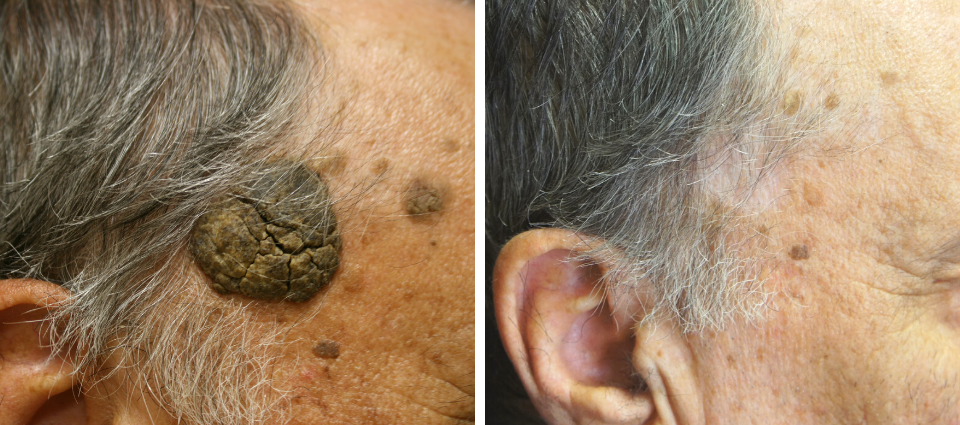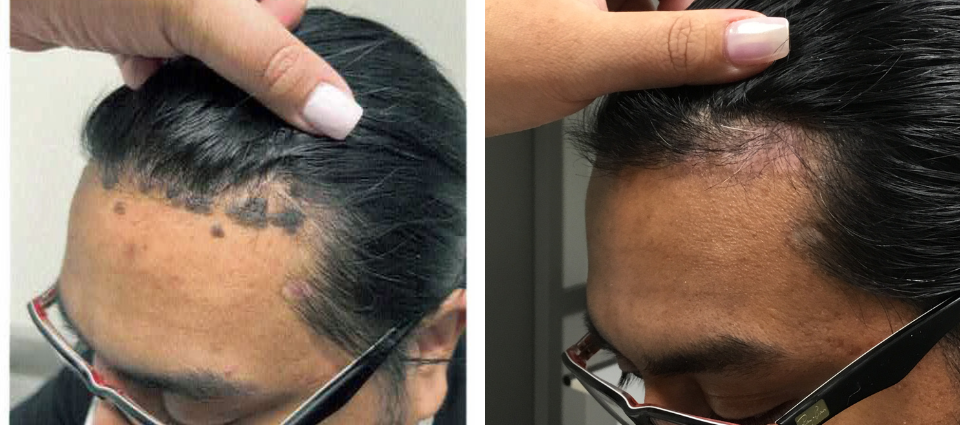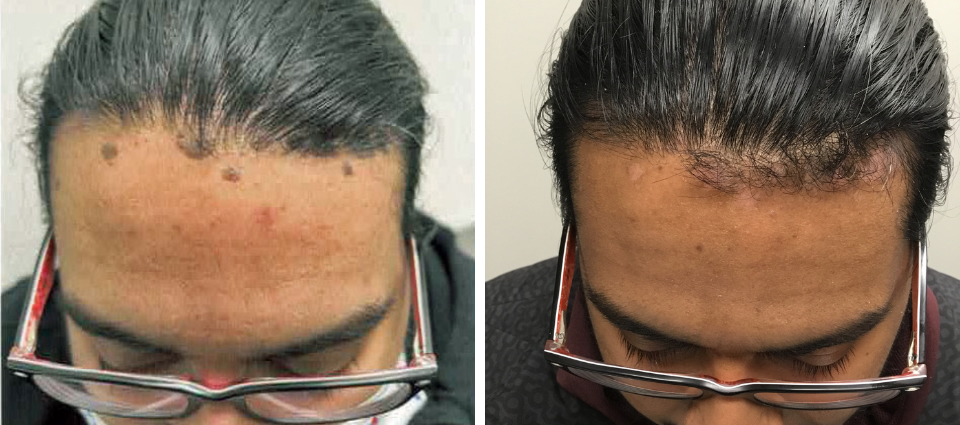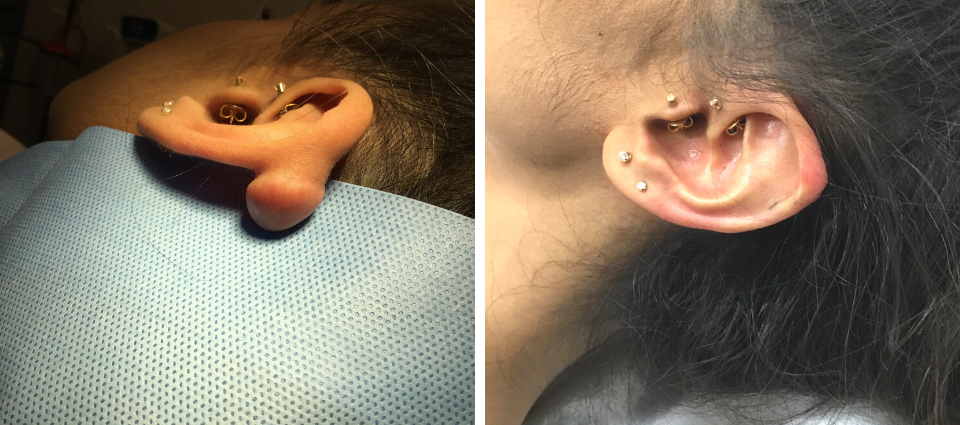Keratosis in Brampton
Keratosis is a growth of keratin, the protein that makes up your skin, hair, and nails, that develops on the skin. Keratosis can come in various forms including actinic or solar keratosis, and seborrheic keratosis. Actinic keratosis presents as a scaly or waxy patch in sun exposed areas of the skin. Actinic keratosis is very common and is caused by UV skin damage. If left untreated, some actinic keratoses can turn into squamous cell carcinoma, in about 5-10% of patients. Seborrheic keratosis are waxy, pigmented superficial patches, sometimes known as age spots which are benign and must be distinguished from melanoma. Seborrheic keratosis usually occurs from a build up of skin cells in the epidermis.
| The ideal candidate for Keratosis | Patients with fair complexion who have had a lot of sun exposure (Actinic keratosis) or patients that do not like the appearance of seborrheic keratosis, are the ideal candidates for this procedure. |
| What is the cost of the treatment? | This price of this procedure varies based on complexity, but on average it costs several hundred dollars for keratosis removal. |
| What are the target areas? | Actinic keratosis usually occurs on the face, including the lips, ears, and neck, as well as the forearms, the scalp, and the back of the hands. Seborrheic keratoses are typically found on the chest and back. |
| The ideal candidate for Keratosis | Patients with fair complexion who have had a lot of sun exposure (Actinic keratosis) or patients that do not like the appearance of seborrheic keratosis, are the ideal candidates for this procedure. |
| What is the cost of the treatment? | This price of this procedure varies based on complexity, but on average it costs several hundred dollars for keratosis removal. |
| What are the target areas? | Actinic keratosis usually occurs on the face, including the lips, ears, and neck, as well as the forearms, the scalp, and the back of the hands. Seborrheic keratoses are typically found on the chest and back. |
The Treatment Process
Keratosis requires a surgical excision to remove the growth. Actinic keratoses are excised and sent to pathology to confirm diagnosis. Sutures are removed at 1 week. Seborrheic keratoses can be removed under local anesthetic by scraping the keratosis. After the procedure, it is essential that you protect the skin with medical grade sun protection.
Book a consultation with one of our experienced technicians!
Resources

Cost vs. Quality: The Importance of Researching Co...

Cosmetic Surgery vs. Plastic Surgery: What’s the...






